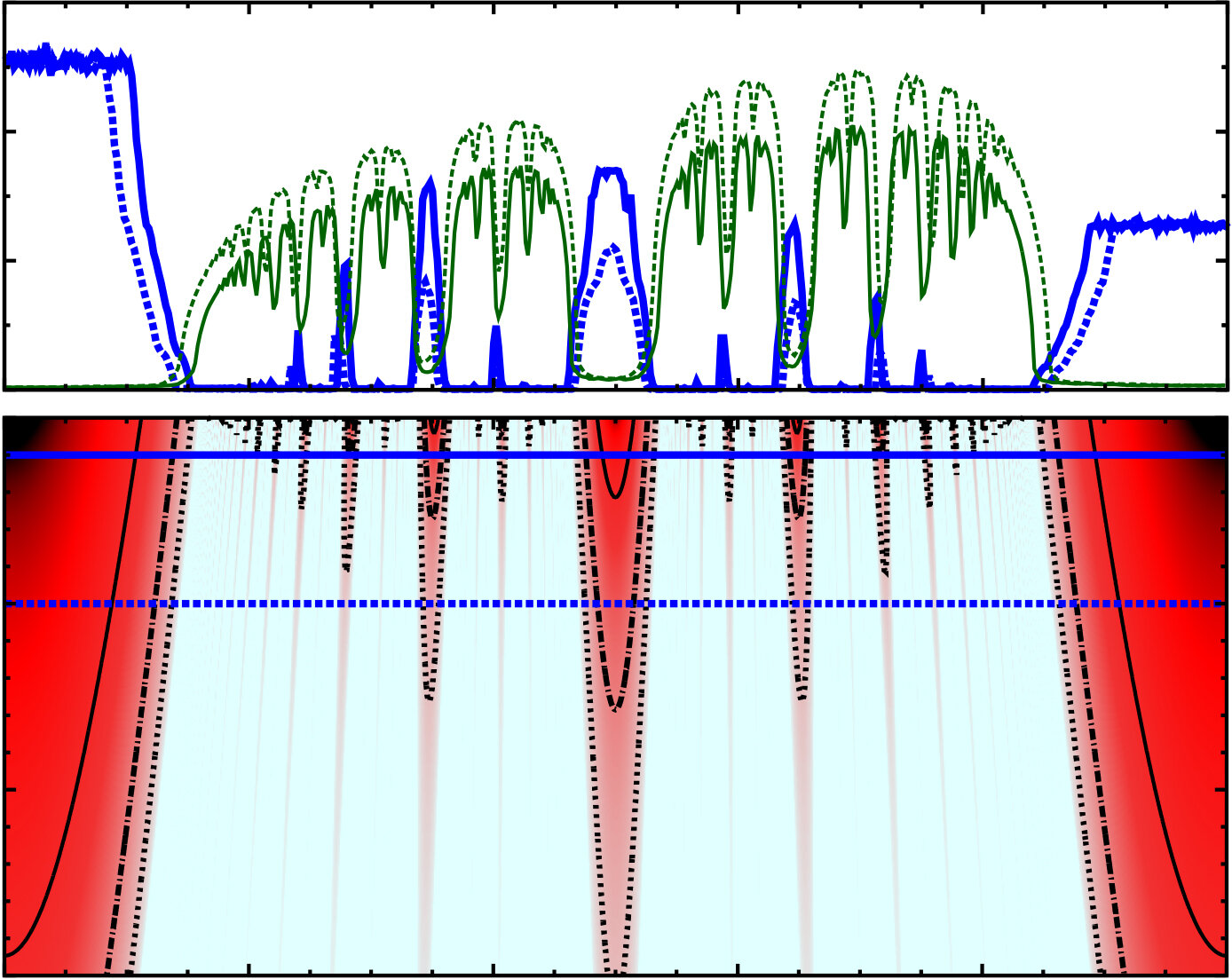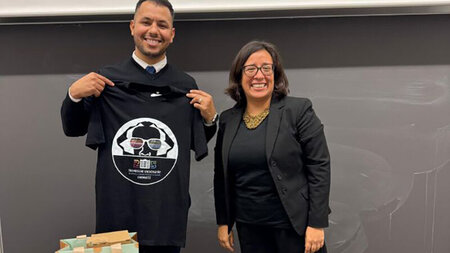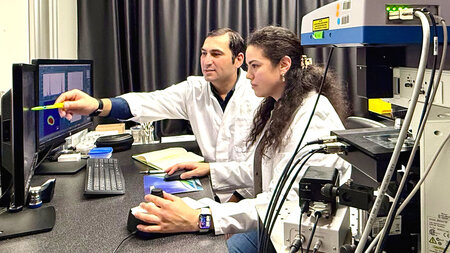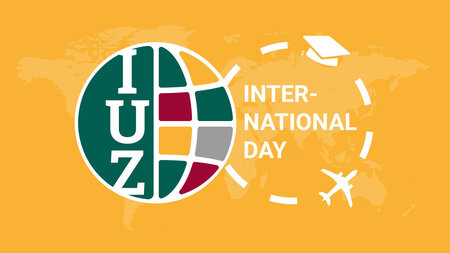Cutting-Edge Research in Retirement
The research group “Complex Systems and Nonlinear Dynamics” publishes in “Physical Review Letters” its newest insights on chaotic diffusion in delay systems
-

The surprising new finding of the publication is contained in the upper blue curves. They show, how irregularly the diffusion speed changes as the delay time is continuously increased (from left to right). One finds a complicated variation of the diffusion strength, which passes through very high and vanishing small values. This is connected to other system properties, which are drawn in green (top), and appear in the shape of so-called Arnold tongues (red areas, bottom). Graphic: Research Group “Complex Systems and Nonlinear Dynamics”
Cutting-edge research at Chemnitz University of Technology (CUT) is not in retirement. On the contrary, some scientists of CUT continue to produce top-research, also during retirement. The presumably latest example is provided by the research group “Complex Systems and Nonlinear Dynamics”, led by Professor Günter Radons. His co-workers and he himself, who retired three years ago, succeeded in publishing their newest scientific insights in “Physical Review Letters”, the world’s premier physics letter journal. As a special recognition, the publication entitled “Chaotic diffusion in delay systems: Giant enhancement by time lag modulation“, was highlighted as “Editors’ Suggestion”. A new finding of this research lies in the insight that a large class of systems with a finite delay time – that is the time between action and reaction – can show chaotic diffusion (see Background 1). Especially surprising and a fundamentally new effect, however, is that already a small time-periodic variation of the delay-time can cause a more than thousand-fold enhancement of the speed of diffusion. The scientists from Chemnitz showed that this enhancement depends in a complicated way on the delay-time and its variation (see Graphics). Typically, such fundamental results, sooner or later, entail new applications, here possibly in the field of laser physics in connection with information transmission and cryptography.
This type of cutting-edge research can typically be achieved only by a team. This project relied on the cooperation and the complimentary competences of two postdocs, Dr. Tony Albers and Dr. David Müller-Bender. Thanks to the successful raising of funds by the research group they could still be kept at CUT. The German Science Foundation (Deutsche Forschungsgemeinschaft, DFG) supports these co-workers through full-time positions within two projects (see Background 2). Of course, such a research topic is also very well suited for educating physics students: in this case, Lukas Hille was able to contribute to the research results within his Bachelor work.
Background 1: Chaotic diffusion
Diffusion is a process, which Albert Einstein in 1905 was able to explain microscopically by random collisions on a molecular level, for instance, when a drop of milk spreads slowly in a cup of coffee – without stirring. Chaotic diffusion is a similar phenomenon, not caused by random collisions, but by nonlinear stretching and folding processes during the dynamical evolution of the system. This kind of diffusion can also be observed in systems with a finite delay time.
Background 2: Third party funded research at CUT
CUT supports the raising of funds by their retired professors, especially by providing infrastructure for project teams. The financial resources necessary for conducting this research were provided by the German Science Foundation (Deutsche Forschungsgemeinschaft, DFG). Details of the funding can be found at https://gepris.dfg.de/gepris/projekt/438881351?language=en and https://gepris.dfg.de/gepris/projekt/456546951?language=en
Original publication in “Physical Review Letters”: T. Albers, D. Müller-Bender, L. Hille, and G. Radons, Chaotic diffusion in delay systems: Giant enhancement by time lag modulation, Phys. Rev. Lett. 128, 074101, Editors' Suggestion (2022). https://doi.org/10.1103/PhysRevLett.128.074101
Further information can be obtained from Dr. Tony Albers, Phone +49 (0) 371 531-39353, E-Mail tony.albers@physik.tu-chemnitz.de, Dr. David Müller-Bender, Phone +49 (0) 371 531-33832, E-Mail david.mueller-bender@physik.tu-chemnitz.de, or Prof. Günter Radons, Phone +49 (0) 371 531- 33205, E-Mail radons@physik.tu-chemnitz.de
(Author: Prof. Günter Radons, Research Group “Complex Systems and Nonlinear Dynamics”)
Mario Steinebach
13.03.2022




